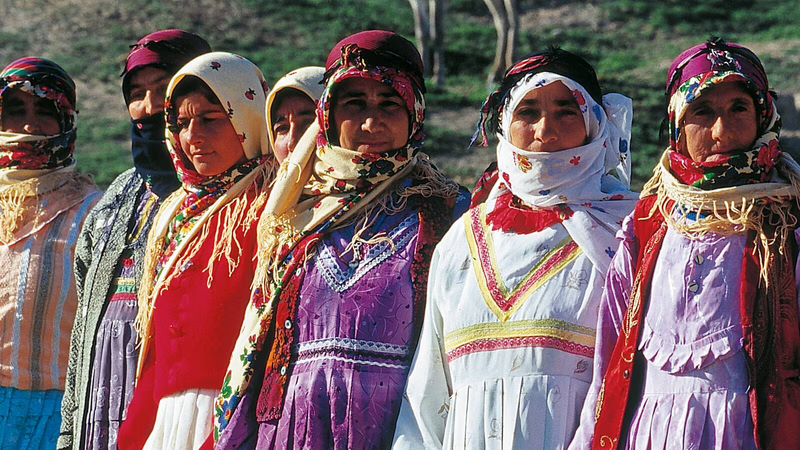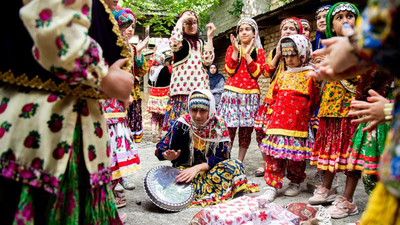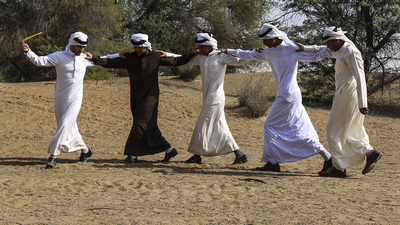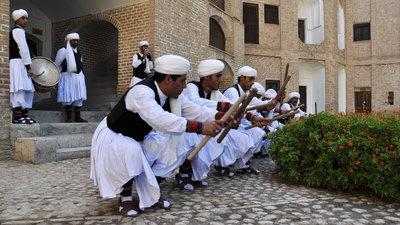
Traditional clothing exports boost Middle East trade platforms.
In most areas, traditional clothing and hand-embroidered clothing are used by local people as everyday clothing. Therefore, in domestic markets, the traditional clothing business can flourish and provide income for local producers and sellers. With international fans of traditional and hand-embroidered clothing, this industry can provide valuable export opportunities. Many people and tourists from all over the world are interested in buying and using this type of clothing. Therefore, manufacturers can exploit this global market and export traditional clothes to foreign countries and markets. Traditional clothing and hand-embroidered clothing can create tourist attraction for a country or region. Tourists interested in local culture and art can travel to different regions to buy traditional clothes. This issue can generate economic income for the local people and the tourism industry. The production of traditional clothing and hand-embroidered clothing is related to local techniques and crafts . These handicrafts can help develop local skills, create employment and preserve local culture and art.
Kimono is a traditional Japanese clothing that is decorated with beautiful and colorful designs and patterns. This clothing is usually hand-embroidered and is one of the important elements of Japanese culture. Kimono is very popular in global markets and many people are interested in buying and using it. Saree is a traditional women's dress in India, which is made of colorful fabrics and various and beautiful patterns. This dress is produced using hand embroidery techniques and various decorations such as brass work and wire work. Saree is known as an important element of Indian culture and is very popular in the global market.
Dirna is a traditional women's dress used in Austria. The outfit consists of a blouse, a skirt and an outerwear and is decorated using vivid colors and designs associated with Austrian culture. Dirna is known as a symbol of Austrian culture and is appreciated in the world markets. A kilt is a type of men's clothing used in Scotland. This outfit includes a raincoat, a shirt, a belt and a pair of socks. Kilts are made of special fabrics that are recognized as a potential of Scottish culture and are more attractive in the global market.
Some countries may have specific legal restrictions and trade regulations regarding the export of traditional hand-made clothing. These restrictions can include restrictions related to intellectual property rights, licensing, financial restrictions, technical standards and regulations, etc. These regulations and laws can negatively affect the export process. Exporters of traditional hand-embroidered clothes may face financial and currency issues. Exchange rate changes, currency exchange restrictions, bank charges and problems in money transfer can have a negative effect on the price and profitability of exports.
The global market is full of competition and the same is true in the field of traditional clothing. Competition with other countries that have similar local traditional clothing can create challenges for exporters. Winning in these markets requires proper management of quality, design and marketing. Transport, packaging and distribution of local traditional clothing may require appropriate logistics infrastructure and arrangements. Problems such as shipping delays, damage along the way, lost packages, and packaging costs can become risks associated with exporting traditional clothing.
The tastes and fashion of young people and customers in modern societies may change and give more importance to modern and international clothes. This can affect the local traditional clothing market and create less demand for their exports. Customers in global markets are interested in quality and high standards. Exporters of local traditional clothing must be able to provide high quality and meet the standards of the target markets. Quality assurance and quality control can be an important challenge for exporting traditional clothes. Exporters of local traditional clothes should pay attention to preserving the cultural authenticity and history of these clothes. Using original materials and traditional techniques in production and obtaining the necessary permits can be a challenge to preserve cultural authenticity while meeting the needs of the global market.



